Enjoying a poached egg is something you might often do at a restaurant, but when was the last time you enjoyed one at home?
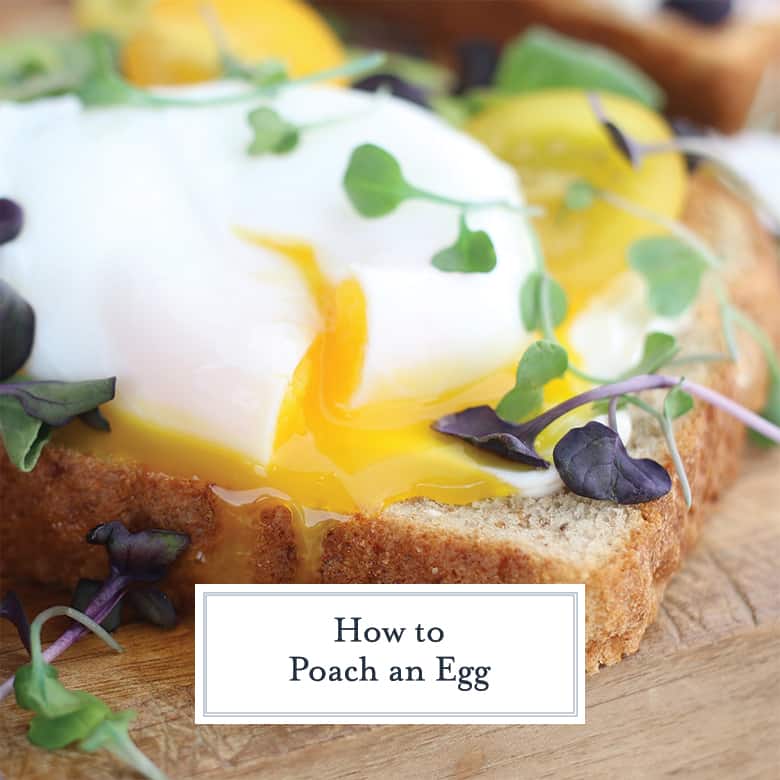
Poached eggs aren’t difficult and can actually be done easily at home. It’s time to break free from the what ifs and start making these eggs right in the comfort of your own kitchen.
Poached eggs aren’t difficult and can actually be done easily at home. It’s time to break free and start making these eggs right in the comfort of your own kitchen.
I have went through all of the various ways to poach an egg and found the best one. It’s safe to say that there are lots and lots of ways to poach eggs. For me, this method gave me the best-poached egg I’ve ever made at home.
I hope you’ll give it a try and I also hope that this version of poaching eggs works well for you!

You Need the Freshest Eggs Possible -We have tried poaching eggs in a variety of different ways. Essentially, we found that the best way to make a poached egg is by using the freshest eggs possible.
Fresh eggs are great from the supermarket, but buying them from the farm will give you the freshest eggs out there.
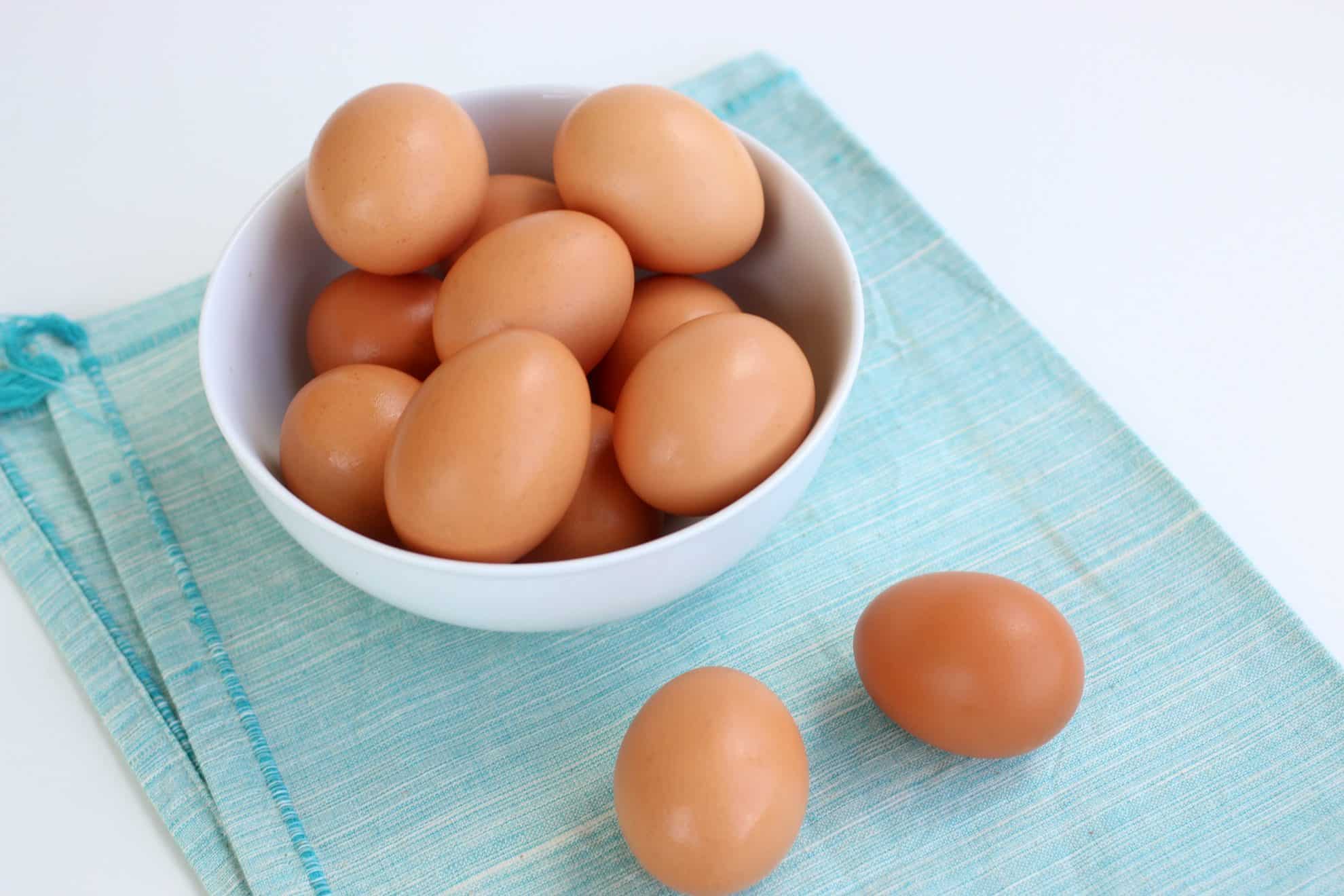
Start a Pan of Water – Just like you do with anything else you cook, you will want to start a pan of water to start boiling.
You can allow the water to boil, while you start getting the eggs ready!
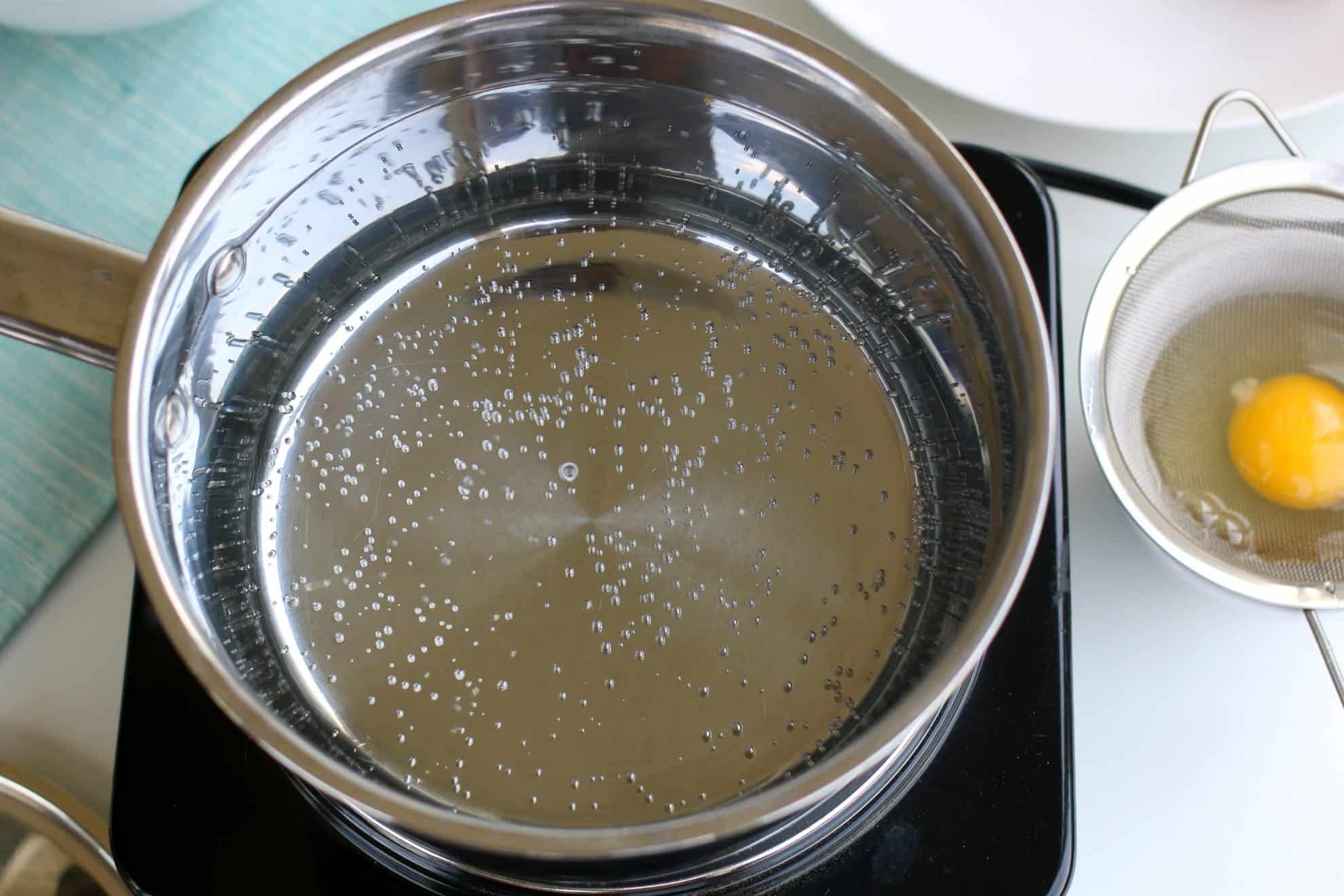
Crack Your Eggs into a Fine Mesh Container – When you strain out the very loose egg white, you will have less egg white wispies floating around. After you have drained the extra egg white, you can pour the egg into a ramekin to make it easier to pour into a pot of water later.
Make sure you put one egg in one ramekin or small bowl. You don’t want to add multiple eggs into the ramekin.
After the Water Starts Boiling, Reduce Heat to Low – You will want to reduce the heat to low, but you will also want to make sure you have some bubbles at the bottom of the pan. You don’t want any bubbles to break the surface.
Salt to the Water?
While some of you may have heard for many years that adding salt to the water to poach an egg is a good thing, it’s not very helpful. It actually makes more white wispies around the poached egg. So, the end result is for you to not add salt to boiling water to poach an egg.
Apple Cider Vinegar?
As mentioned before, there are MANY ways to poach an egg. Using apple cider vinegar in a poached egg actually helps you get a better result. Before poaching the egg, you will add one tablespoon of apple cider vinegar to the boiling water.
How do I Start Poaching Those Eggs?
After you add the apple cider vinegar to the water, you will want to stir the water and create a vortex. The vortex works and really does help poach an egg the best.
Once you have a nice fast vortex, you’re going to drop your egg, right into the middle!
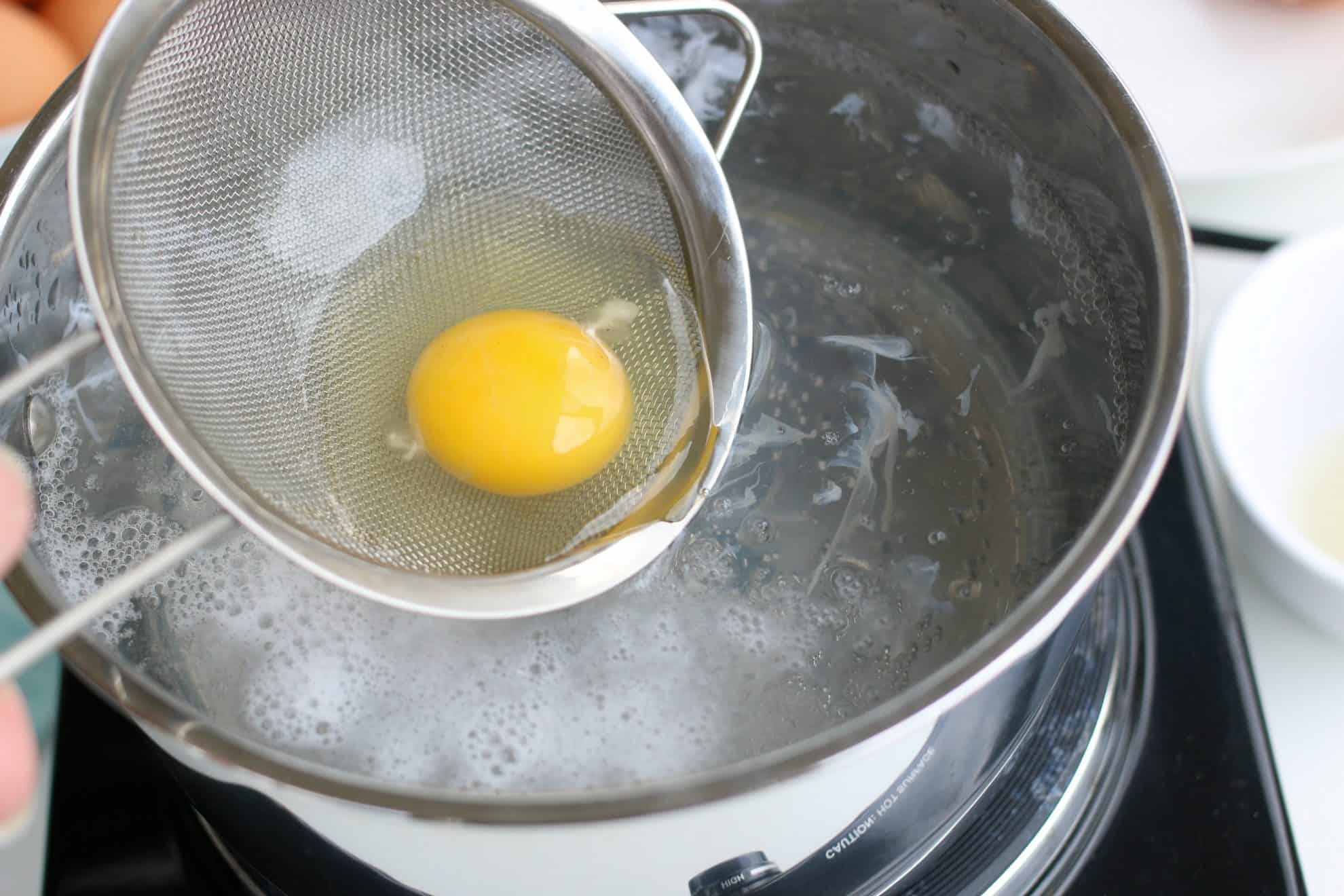
As you drop the egg into the vortex, it will start cooking and create an amazing poached egg shape.
You will want to set that timer for 3 minutes so that you get a firm yolk. And if you want that yolk of yours to be firmer, you can add another 30 seconds to the timer.
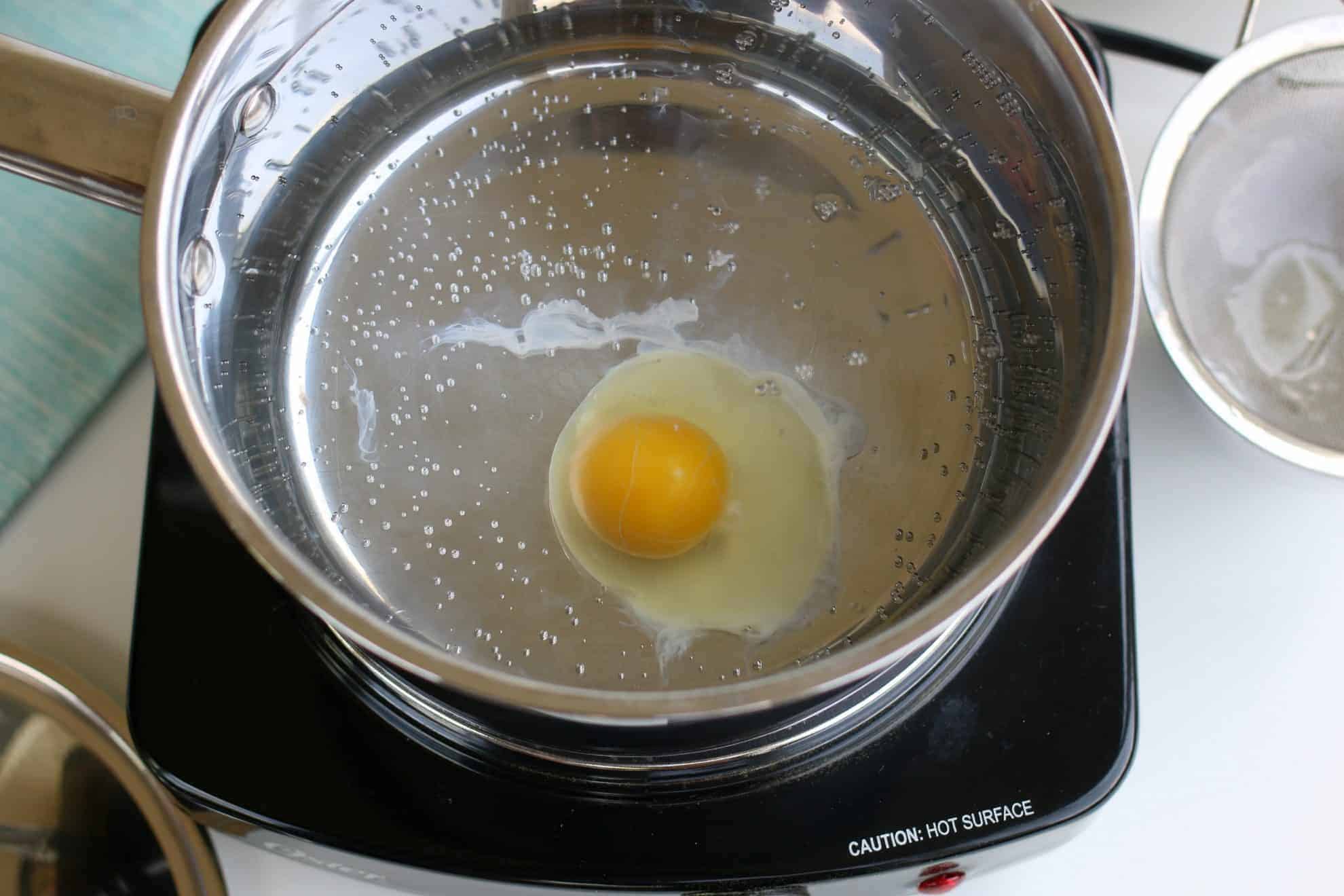
Once the time is up, you will use a slotted spoon to remove the egg from the water. Give that egg a little poke to see how firm it is.
I like to dab the poached egg on a paper towel to help get rid of some of the excess water.
PRO TIP: Use poached eggs in any recipe that calls for a fried egg!
I prefer to poach one egg at a time, but you can cook more than one egg at a time. You do this by pouring in each egg into the pan.
The egg shapes won’t be as good and may seem flat, but it still works. Not everyone has the time to cook one egg at a time and that’s okay.
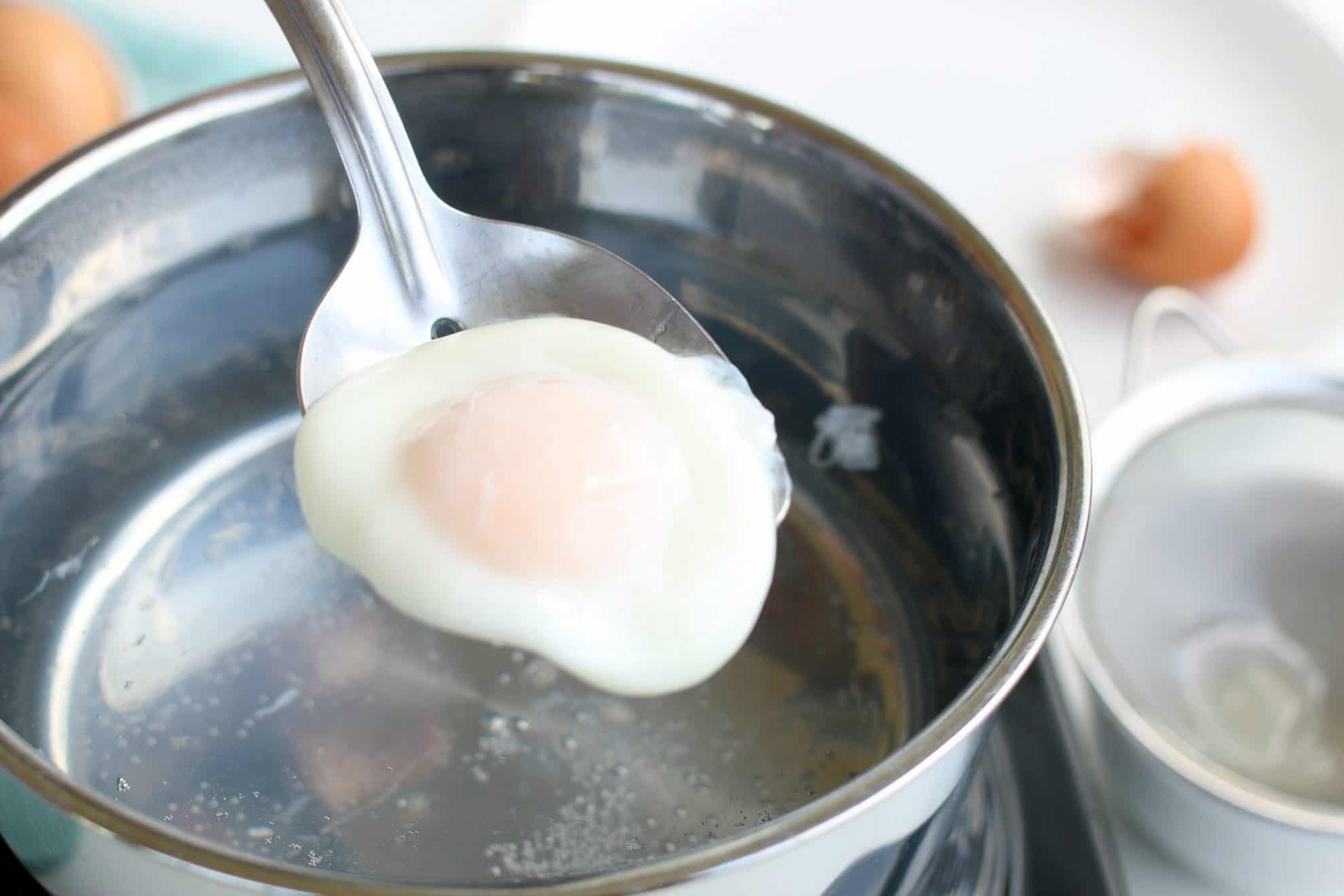
How do I make poached eggs for ahead of time?
Like many busy families of the world, you’re trying to think ahead! For planning ahead with poached eggs, you will follow all the above directions and then place the egg in an ice bath.
This helps stop the poached egg from cooking more. This is especially great when you’re cooking ahead of time, you don’t those eggs to cook any more than what you have done so yourself.

Poaching an egg may be a bit intimidating, but you can do this! Poaching an egg will become natural, just give it time.
PRO TIP: Add poached eggs to avocado toast, breakfast potatoes, pizza, hamburgers and more! Everything tastes better topped with a runny egg!
Soon enough, the kids will start asking for poached eggs instead of scrambled eggs.
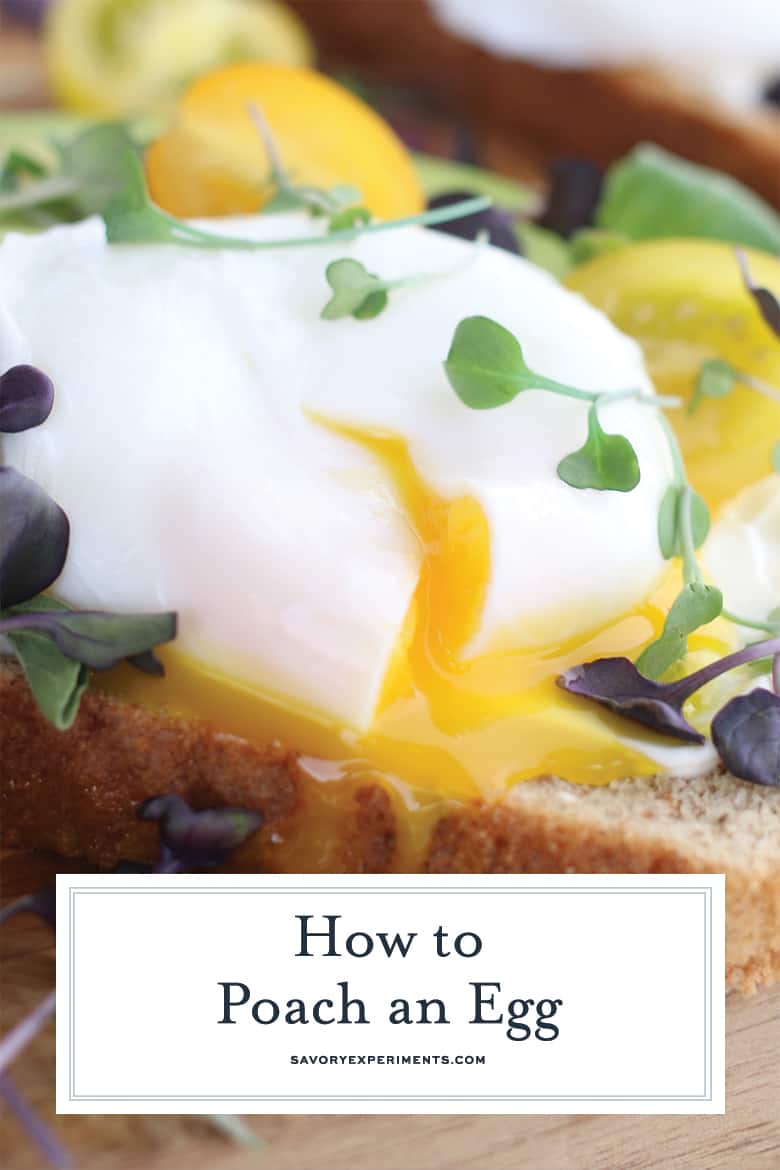
Recipes that use poached eggs:
- Easy Huevos Rancheros
- Chickpeas and Poached Eggs
- Simple Eggs Benedict
- Sauteed Asparagus with Poached Eggs
More breakfast recipes:
Blended Baked Oats Recipe
Nutella Pancakes
Perfect Hard Boiled Eggs
How to Poach an Egg
Equipment
Ingredients
- 1 fresh egg
- 1 tablespoon apple cider vinegar
Instructions
- Add 4-5 inches of water to a saucepan. Bring to a boil over high heat.
- Crack your eggs into a fine mesh sieve to strain out the very loose egg white, you will have less egg white wispies floating around. After you have drained the extra egg white, you can pour the egg into a ramekin to make it easier to pour into a pot of water later. Make sure you put one egg in one ramekin or small bowl. You don’t want to add multiple eggs into the ramekin.
- After the water starts boiling, reduce heat to low, but make sure you have some bubbles at the bottom of the pan. You don’t want any bubbles to break the surface.
- Add one tablespoon of apple cider vinegar to the simmering water.
- Stir the water and create a vortex. Once you have a nice fast vortex, you’re going to drop your egg, right into the middle.
- Set the timer for 3 minutes so that you get a firm yolk, less time, about 2.5 minutes for a super runny yolk. And if you want that yolk of yours to be firmer, you can add another 30 seconds to the timer.
- Once the time is up, you will use a slotted spoon to remove the egg from the water. Give that egg a little poke to see how firm it is.
- Dab the poached egg on a paper towel to help get rid of some of the excess water.
- Use your poached egg in any recipe that calls for it!
- If you’ve tried this techinque, come back and let us know how it went!
Notes
Nutrition
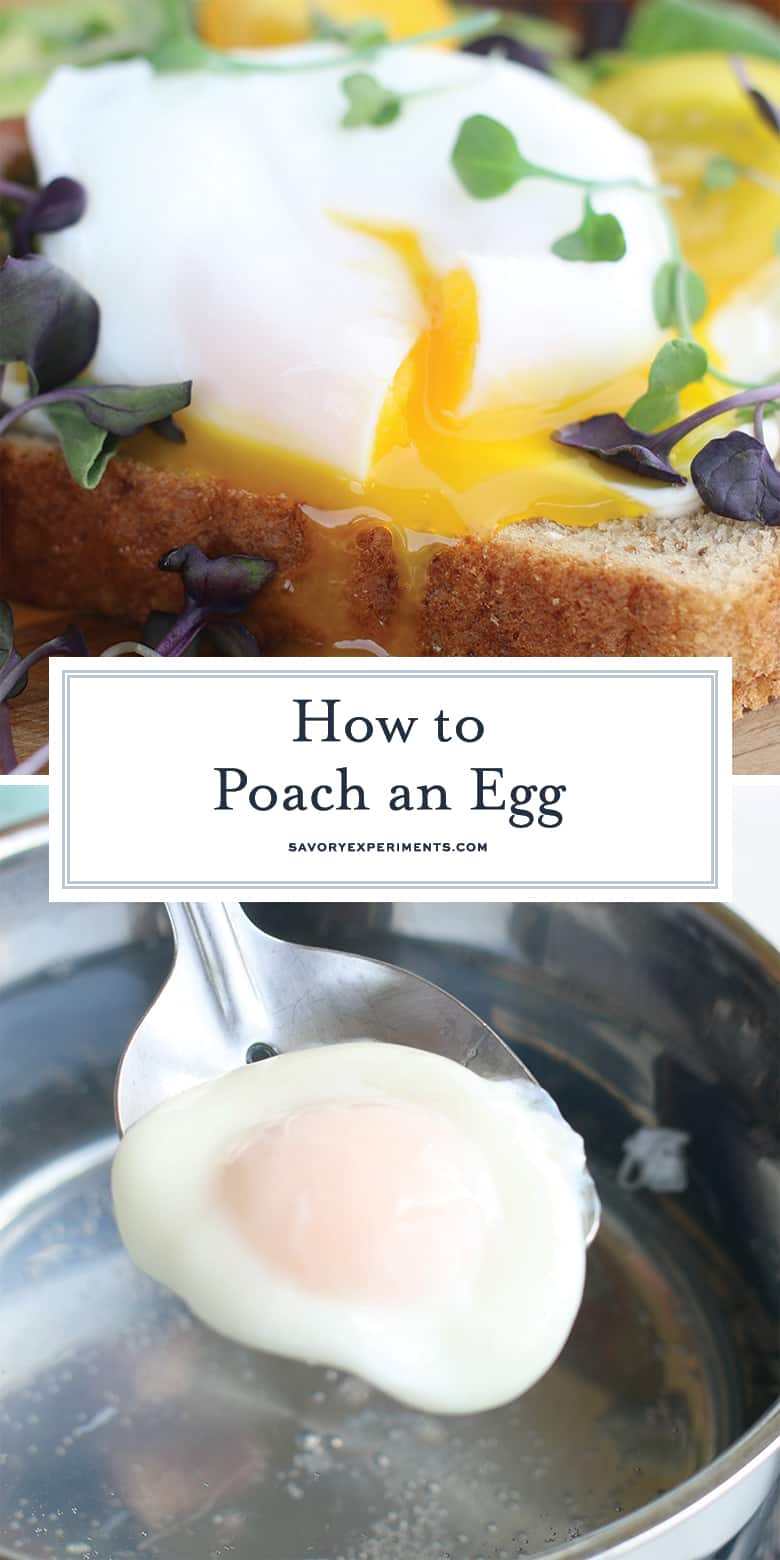


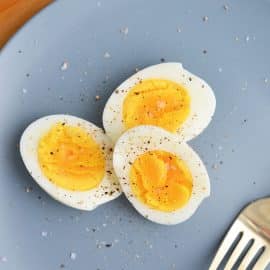





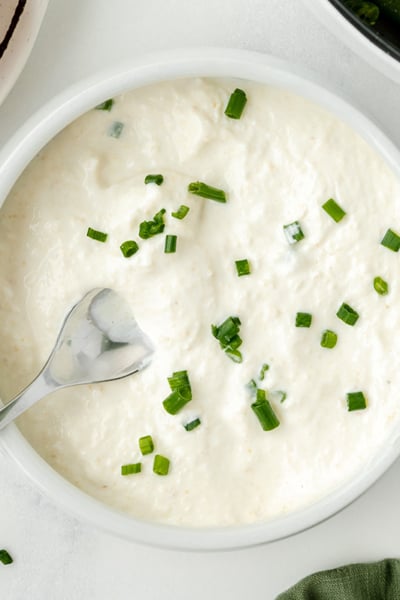













Ooh I love the sight of a good poached egg! And the detailed instructions are very helpful. Thank you!
This is a great step by step!
Perfect instructions! Definitely helped me get through the process of poaching an egg! It’s so good!
I love poached eggs! Thanks for all these great tips!
This was such a great how-to for a poached egg! I’ve always had trouble with it, but you’ve inspired me to give it another try!